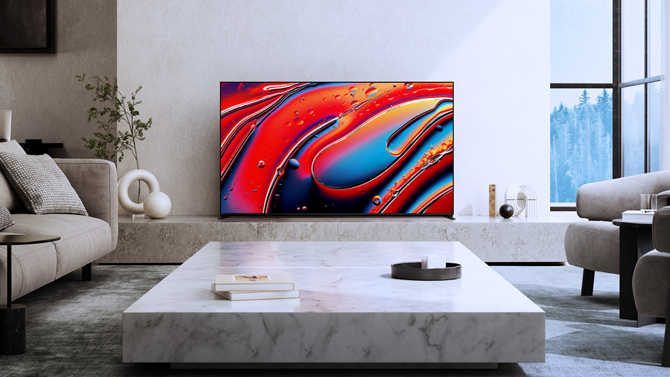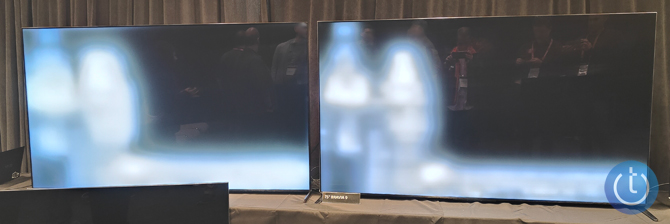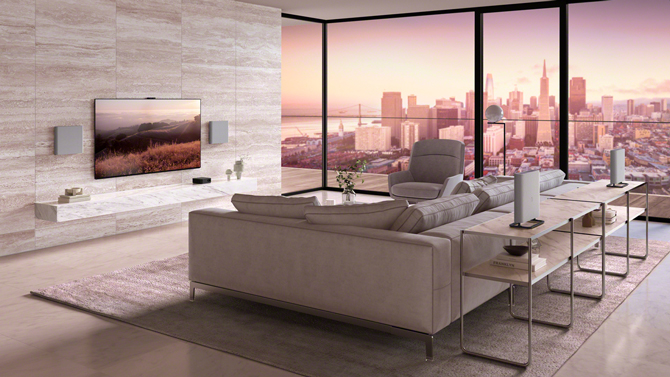Today, Sony officially unveils its 2024 lineup of TVs and home theater audio components. While promising the usual improvements in picture and sound, this year's models really excel at simplifying the home theater experience while maximizing performance.

Having tested hundreds of TVs over the years, I always recommend going into the set's pre-set picture modes and selecting movie or cinema mode to get the best picture out of a TV. But few viewers ever change those settings. So Sony makes the default setting on its TVs essentially the same as the movie setting on other TVs. And with its new line of sets, it's trying to further simplify the home cinema experience by adding more automatic adjustments and even streamlining Sony's model naming system.
Now, all of Sony's home theater audio components will join Sony's TVs under the Bravia brand. The simplified nomenclature is a welcome change, making it easier for shoppers; the Bravia 9 TVs (shown above) will be the flagship mini-LED models (up to 85 inches for $5,499.99), for example, as will the Bravia 9 sound bar ($1,399.99). Although Sony is touting a 50-percent brighter picture, the Bravia 9's major picture improvement, based on my preliminary viewings, is better off-axis viewing angles. So, even if you don't get the prime viewing spot on the couch at home, you'll still see fully saturated colors and details.

Thanks to its mini-LED backlight technology, you can see more detail in the glowing white figures on the Sony Bravia 9 (shown right).
Sony will also continue to improve its 2024 OLED offerings in the Bravia 8 line in sizes up to 77 inches ($3,899.99), with clearer details in shadowy scenes. The Bravia 7 LCD 4K sets will offer improved video processing in more (slightly more) moderately priced mini LED sets ($3,499.99 for an 85-inch TV). All the models mentioned will include IMAX Enhanced and Dolby Vision picture modes.
Read more: Take Advantage of Your TV's Big Screen to View Your Photos
Better still, given that most viewers are streaming content, Sony will launch a new Calibrated Mode to be featured on Amazon Prime. It will recognize your connected Sony TV and automatically adjust the picture for the best results when enabled. So, if you're viewing movies like Dune Part Two, the Sony set will adjust the picture for the best view of the sands of Arakis. Conversely, your set will change the image to a more vibrant picture setting if you're watching NFL football. Amazon Calibrated Mode also incorporates the ambient light sensor in Sony's TVs so that if you are, for example, watching TV in a bright, sunny room, it will boost the picture brightness – or turn it down for late-night movie watching.
The Bravia 9, 8, and 7 TV lines will also all support Dolby Atmos surround sound. However, the audio feature that particularly impressed me was Sony's improved Voice Zoom 3 feature. It is basically a dialogue-boosting sound setting, but unlike similar options on competing sets, Sony's actually works without making movies sound tinny or blasting you out of your seat. In my preliminary auditions, Voice Zoom 3 seemed like a genuine improvement in making dialogue audible. Rather than focusing on a specific voice-centric frequency range, it tries to isolate the dialogue within a scene and enhance its clarity.
Read more: Cutting the Cable Cord: A Step-by-Step Guide to Switching to Streaming
On the sound bar front, this year's standout offering will be an array of flat, square surround sound speakers that Sony calls the Bravia Theater Quad. The four design-conscious speakers with cloth coverings are subtler and fit more seamlessly into typical living rooms or dens. More importantly, the $2,499.99 system doesn't require complex settings or placement. The Bravia Quad system automatically gauges the sound metrics of your room and balances the speakers accordingly (with an app, of course).

You can pre-order the new Sony TVs and sound systems beginning this spring.
[Image credit: John R. Quain/Techlicious, Sony]
John R. Quain has been covering science and technology for over 20 years. His work has appeared in Rolling Stone, PC Magazine, Esquire, and U.S. News & World Report. He was the on-air technology contributor to the CBS News Up to the Minute television show for 17 years and is a regular contributor to The New York Times.















